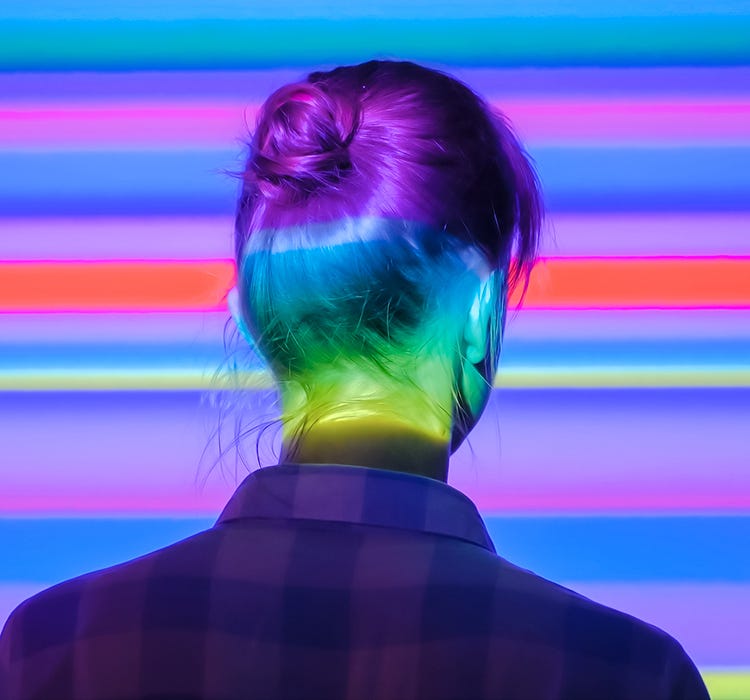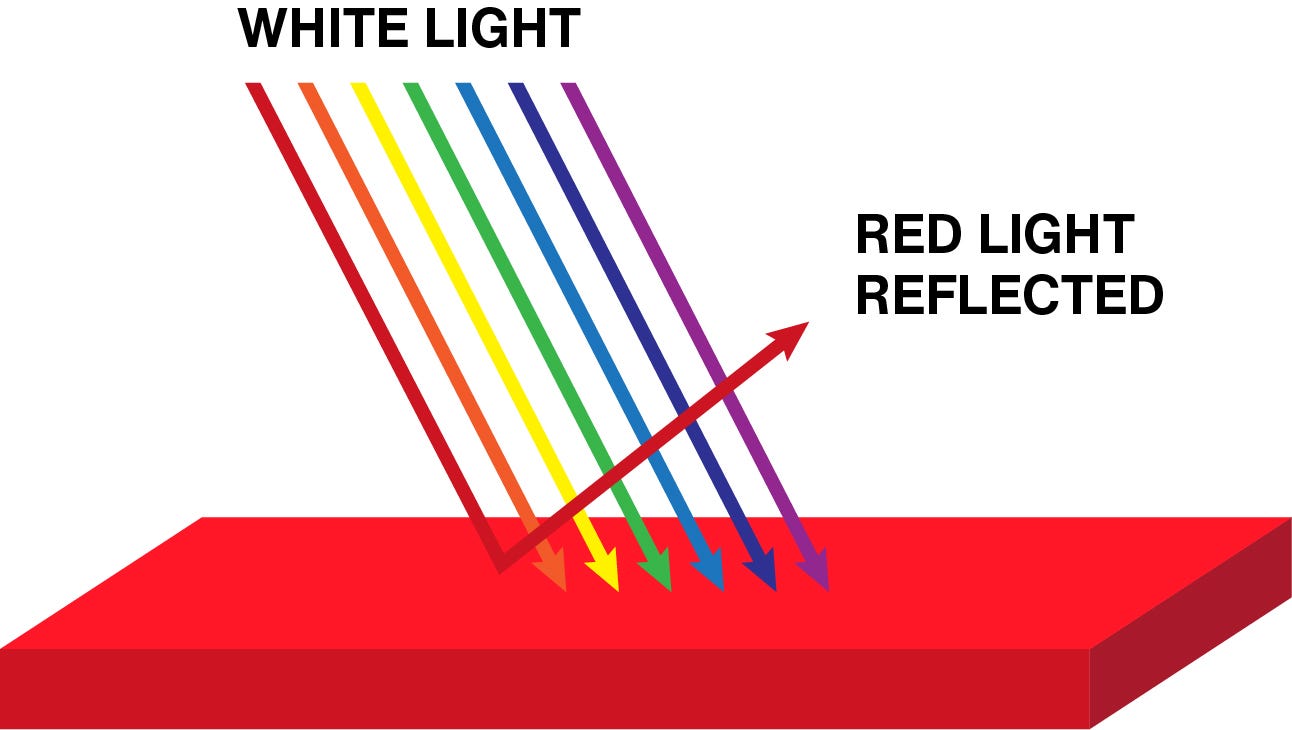Explain How Do We See Different Colours of an Object
The colours we see are the wavelengths that are reflected or transmitted. The iris is the colored part of your eye and the pupil is the little dark circle in the center of your eye.
The cornea will help direct the light towards your pupil and Iris.

. When light hits an object some is absorbed and some reflects eg. The ones it reflects are the ones we see as color. In fact we cant be so sure that we do all see the same colors.
Here are the answers First you need to understand that light is nothing but electromagnetic wave there is nothing like color associated with any light. Sunlight is a mixture of all colours of light which combine to form brilliant white light. Color is completely a phenomena of your eye.
Thats where cones come in. Some surfaces reflect all of this light while others absorb some of the colours. All the colors we perceive are an effect of light.
Now When you look at a banana the wavelengths of reflected light determine what color you see. Objects appear coloured because of the way they reflect light. The light that comes through our eyes.
Cones are one type of photoreceptor the tiny cells in the retina that respond to light HOPE IT HELPED. Eye contains three types cells cones redblue green these are. If we confine ourselves to the visible portion of the electromagnetic spectrum and ignore the brains role in color perception see.
The color statistics of objects are not random. Different light wavelengths different. I showed her a video on YouTube where it was explained that light hits an object and if that object is a tangerine then that object will absorb all colours except orange and will reflect orange and thats why we see it as being orange.
When light hits an object say a banana the object absorbs some of the light. Objects appear different colours because they absorb some colours wavelengths and reflected or transmit other colours. A person often recognizes certain objects due to.
With flashlights filters le. If only the rods are activated you dont see color just shades of gray. This means that the light leaving the prism is spread out into its different colours a process called dispersion.
The seemingly colorless sunlight actually contains all the colors we can see but at different wavelengths. Colour is a product of light. When a beam of white light falls on an object it absorbs certain wavelengths of light and reflects the other which is responsible for its colour.
Color constancy ensures that the perceived color of an object stays about the same when seen in different conditions. When you see objects you just receives light reflected or refracted from those objects which is perceived by your eye as color. The speed wavelength at which the light is reflected back to the eye results in a colour.
Scientists explain that color in part is for object recognition. Ii This is because they do not possess some cone cells in their eye that respond to certain colours eg. Violet has the shortest wavelengths.
To fully understand what colour is and how we see it we must first understand exactly what colour is. When light hits an object some of the light rays reflect off the object and some light rays are absorbed black. Dispersion of white light by a prism into a spectrum The spectrum.
Red light has the longest waves orange is slightly shorter and so on. White light is composed of radiation of all colors. What colors we see depends not just on how things are in the world around us.
For example a red shirt looks red because the dye molecules in the fabric have absorbed the wavelengths of light from the violetblue end of the spectrum. When sunlight falls on an object the surface of the object absorbs some of the light and reflects the rest of it. Roses are red and violets are blue but we only know that thanks to specialized cells in our eyes called cones.
The light waves reflect off the bananas peel and hit the light-sensitive retina at the back of your eye. Join Rebecca Emerich Educational Outreach Manager as she uses everyday objects to explain absorption and reflection of light. The colour of light depends on how long its waves are so we see different colours because each colour has a different wave length.
In other words when we see colours we are really seeing light of different wavelengths. Our brain is responsible for deciding what color we are seeing based mainly on one factor. I The colour of an object depends upon the wavelength of light it reflects.
The cornea is a clear thin layer on the outside of your eyes. This phenomenon is known as color constancy. A white ball looks that way because it.
Your past visual experiences with objects also influence your perception of color. These two parts work together to control the amount of light entering your eye. We perceive things to be a certain color because of the way our eyes sense the various frequencies of light reflected off of them.
In fact color itself is light of a particular wavelength reflected. Red-green colour blind person does not possess red and. When an object receives light it absorbs some wavelengths and reflects others.
The color of an object has to do with the waves of visible light that it reflects.

I Can Describe Properties Of An Object Science Lessons Teaching Science Homeschool Science

Describing Objects Using Color Sight Words Describing Words Sight Words Words

No comments for "Explain How Do We See Different Colours of an Object"
Post a Comment